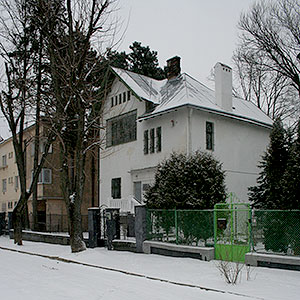- КАРПАТИ.INFO
- Ukraine
- Lviv region
- Lviv and surroundings
- Lviv
- Basivka
- Bibrka
- Bryukhovychi
- Velyky Lyubin
- Vynnyky
- Vyshnya
- Vidnyky
- Vovkiv
- Volya-Vysotska
- Horodok
- Hrimne
- Dubliany
- Zhovkva
- Zashkiv
- Zvenyhorod
- Kamyanka-Buzka
- Kernytsya
- Komarno
- Krekhiv
- Kulykiv
- Lavrykiv
- Pyatnychany
- Lviv suburbs
- Peremyshlyany
- Potelych
- Pustomyty
- Rava-Ruska
- Rakovets
- Svirzh
- Stara Skvaryava
- Stare Selo
- Tovshchiv
- Univ
- Shchyrets
- Lviv
- Museums, galleries, art exhibitions
- Furniture and Porcelain Museum
- Lviv
- Basivka
- Bibrka
- Bryukhovychi
- Velyky Lyubin
- Vynnyky
- Vyshnya
- Vidnyky
- Vovkiv
- Volya-Vysotska
- Horodok
- Hrimne
- Dubliany
- Zhovkva
- Zashkiv
- Zvenyhorod
- Kamyanka-Buzka
- Kernytsya
- Komarno
- Krekhiv
- Kulykiv
- Lavrykiv
- Pyatnychany
- Lviv suburbs
- Peremyshlyany
- Potelych
- Pustomyty
- Rava-Ruska
- Rakovets
- Svirzh
- Stara Skvaryava
- Stare Selo
- Tovshchiv
- Univ
- Shchyrets
Furniture and Porcelain Museum
Museum of Ethnography and Arts Crafts Department
Ethnology Institute of National Academy of Sciences of Ukraine
The furniture exposition begins with the XVII с. samples, when the trunk-kasone took the important place in the Italian Renaissance dwellings. Besides the trunks, various by their design wardrobes were used in many European countries. Decorations of some trunk and wardrobes samples remember the facade ornamentation of architectural structures. Intarsia and incrustation with ivory were also used for wardrobes decoration.
In XVII c. — the beginning of XVIII с. the baroque style caused the emergence of monumental wardrobes, mainly made in Hdansk. There are some samples of Hdansk furniture in the display. There is an interesting exhibit — the trunk, the gift for a newly married couple, and a Spanish table with the chairs.
Daintiness and elegance are typical for rococo furniture. The golden elements with smooth forms appear at that time. The samples of commodes and secretaires are very interesting. And even Gobelins of that epoch change the topic — the landscapes appear. The classical and Empire style furniture differs by revival of antique forms and topics.
There is also a collection of West European industrial ceramics, the largest in Ukraine. The large collection part is West European china of XVIII c. — the beginning of ХХ с. The most numerous are the articles made in manufactories of Meyson, Vienna, Berlin, Sevr, Copenhagen, etc. They are table plates and dishes, tea and coffee sets, service plates, aroma vases, writing desk sets, snuffboxes. The collection of china plastic arts is of separate interest. They are the sculptural groups on mythological, allegoric and every day topics.
The art metal collection ia situated on the second floor. There are various things — trunks-safes, locks, bells, decorative laps, architectural metal. The collection is based on the European masters articles.
The majority of the second floor's halls are dedicated to two rare exhibitions: the first one is "The Ancient Galician Tiles" of Petro Linynsky, the restorer, collector and artist; and the second one — the glass pictures collection of Ivan Skolozdra, the original glass master.
Students — 30 UAH.
Children — 30 UAH.
Pupils, students — 60 UAH.
Group — 10 persons.
© 2005-2025 karpaty.info
All rights reserved. No part of this site may be reproduced without our written permission.

 Ukraine
Ukraine Poland
Poland Slovakia
Slovakia
 Українською
Українською



















































































































































